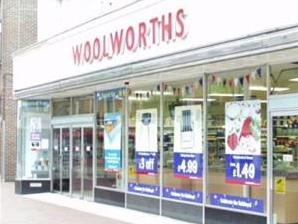What will the high street look like in 2020?
How the internet is driving change in bricks-and-mortar stores

What will the high street look like in ten years' time? Following the recent losses of the likes of Woolworths and Borders UK, many predict the continuing erosion of businesses based around the traditional offline store.
However, there are some signs of hope, with bigger aspirational brands - the likes of Disney, Nike, Apple and others – leading the way in innovative uses of new technologies in stores to entertain and inform and retain the high street customer.
Really, there are two vital questions to be asked about the future of online and high street shopping. On the one hand, are online price comparison sites and new mobile shopping apps 'killing' the traditional high street?
Or, are they part and parcel of an emergent high street renaissance – pushing traditional bricks-and-mortar stores in new directions, and forcing new deployments of entertainment and audio-visual technologies to keep consumers entertained and regularly returning (and, crucially, spending there – instead of browsing there then shopping online)?
"My opinion is that online and mobile technology is definitely damaging the high street," says Bruce Fair, UK Managing Director of price comparison site Kelkoo. "For the top ten most searched-for items in the UK in the six weeks run up to Christmas you can save 20 per cent, through buying those items online.
"At Kelkoo we estimate that Christmas retail sales in the UK this year are going to generate £44.7 billion worth of revenue for retailers. So if consumers are looking at a typical online saving of 15 to 20 per cent, that would 'cost' British retail around £6 billion in revenues. "
Six. Billion. Pounds.
Get daily insight, inspiration and deals in your inbox
Sign up for breaking news, reviews, opinion, top tech deals, and more.
"Pretty soon, most consumers are going to wise up to that fact. And if online continues to grow at the same pace that it has in the last twelve months, then it will be at parity with offline – in terms of consumer spending – by 2015," thinks Fair.
The future, part 1: click-and-collect
Obviously, offline retailers aren't going to sit back and do nothing about the threat to their businesses from online and mobile stores and price comparison apps.
"I think we will see a lot more push in 2010, from the likes of John Lewis, Tesco - and perhaps even Amazon – towards 'click-and-collect'," says Bruce Fair. "You get all the benefits of shopping online – the convenience, the cost-savings, the time-savings and so on and then you opt to pick up your products from a local store that suits you."
Click-and-collect is already popular among companies such as Argos and specialist electronics and tech retailers such as Jessops, and US mega-retailer Wal-Mart has recently made noises about the fact that its intentions to make drive-thru megastores available to all US consumers are a key part of the strategy to combat the continuing encroachment of online retail giants such as Amazon on its business.
"A lot of offline retailers are recognising the fact that this model is very powerful from a consumer point-of-view because it takes away any possible headache that an online retailer might have around delivery," adds Fair. "All of the offline retailers that can capitalise on click-and-collect will do in the next 24 months. And I think they will push it really hard."
And while this is hardly shocking, industry-rattling news, it does seem that a lot of our much-loved high street stores are set to be around for a good few years yet, if the Kelkoo MD's predictions prove to be correct and 'shopping online and picking up locally' turns out to be the next major trend in UK retail in the coming years.
Consumers also have that extra bit of confidence and peace of mind with click-and-collect online shopping at the likes of John Lewis, Argos or Jessops. Basically, you know that if you don't like it or something goes wrong with it, you can easily take it back to the store.
e-Commerce is unstoppable
But where does all of this leave Amazon?
"It's a good question," says Fair, "you could argue that they are reasonably exposed without a network of offline delivery points… but then again, you look at the continent and you see companies such as Pixmania who are already pretty far advanced insofar as you can order online and pick up from one of their hundreds of pick-up points throughout France, Italy and more."
Pretty much all of the other major price comparison websites in the UK are making similar predictions to those outlined above by Kelkoo, with regards to the future of our high streets.
"The growth of ecommerce is unstoppable; soon all high street stores will provide shopping online," agrees Bastien Duclaux, CEO and co-founder at Twenga. "In the past year alone, Twenga has added 3,400 retailers to our UK site, and almost doubled the number of product offers displayed to 180 million."
"As a price comparison site, we have seen bargain-hungry UK consumers becoming increasingly price sensitive. They are more determined than ever to compare prices and check information online before buying, whether this purchase is finally made in store or online. This has been especially true during 2009 and the recession, with some 80% of British online users saying they'll use price comparison sites to save money."
Current page: What will our high streets look like in future?
Next Page The future, part 2: Mobile shopping apps